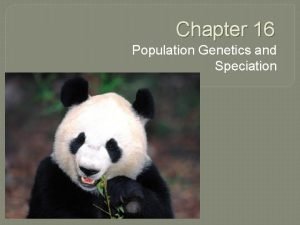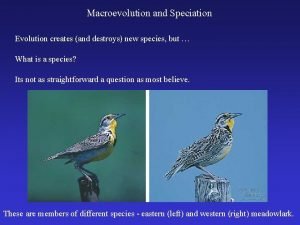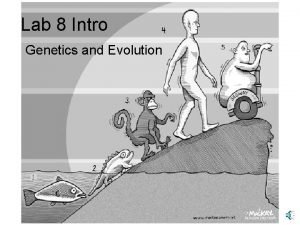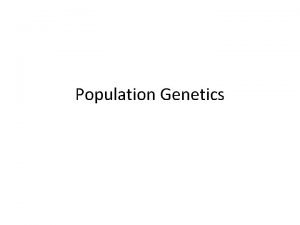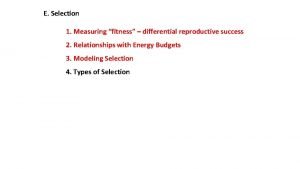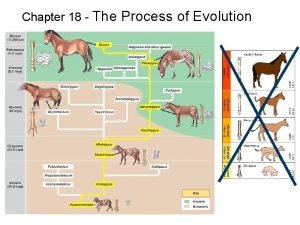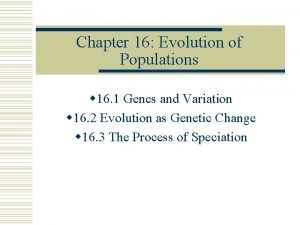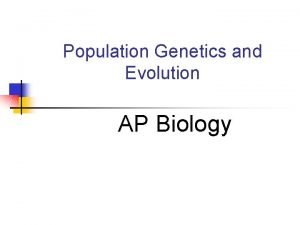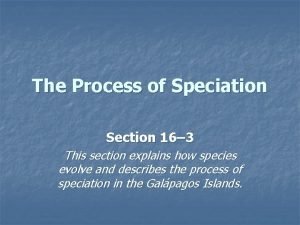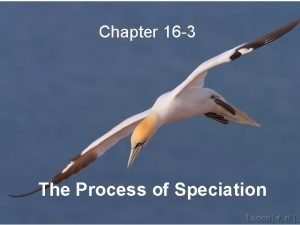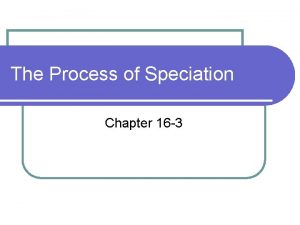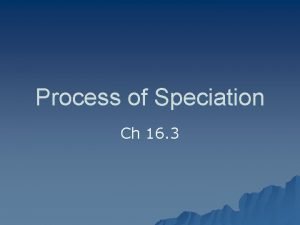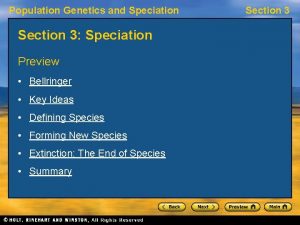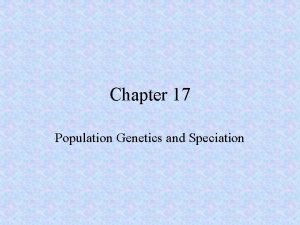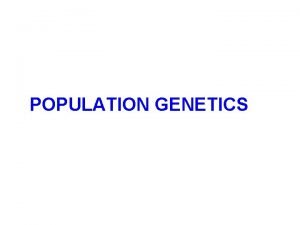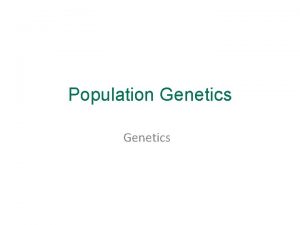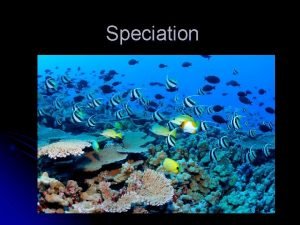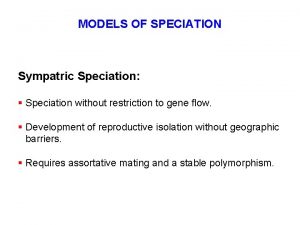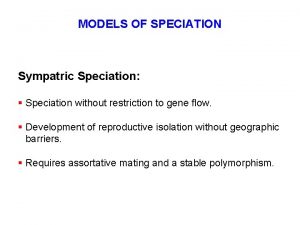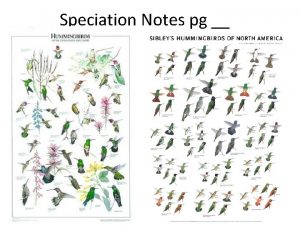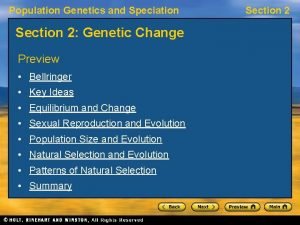Population Genetics and Speciation Section 3 Speciation Preview















- Slides: 15

Population Genetics and Speciation Section 3: Speciation Preview • Bellringer • Key Ideas • Defining Species • Forming New Species • Extinction: The End of Species • Summary Section 3

Population Genetics and Speciation Section 3 Bellringer Look at some photographs of a dog and a cat. Describe the differences that keep the two separated.

Population Genetics and Speciation Section 3 Key Ideas • How can species be defined? • How do we know when new species have been formed? • Why is studying extinction important to understanding evolution?

Population Genetics and Speciation Section 3 Defining Species • Scientists may use more than one definition for species. The definition used depends on the organisms and field of science being studied. • A species is generally defined as a group of natural populations that can interbreed and usually produce fertile offspring. • This definition is based on the biological species concept.

Population Genetics and Speciation Section 3 Defining Species • Other definitions for species may be used for fossils or for organisms that reproduce asexually. • Instead of, or in addition to, the biological species concept, species may be defined based on: – their physical features, – their ecological roles, or – their genetic relatedness.

Population Genetics and Speciation Section 3 Forming New Species • Each population of a single species lives in a different place. • In each place, natural selection acts upon each population and tends to result in offspring that are better adapted to each specific environment. • If the environments differ, the adaptations may differ. This is called divergence and can lead to the formation of new species.

Population Genetics and Speciation Section 3 Forming New Species, continued • Speciation is the process of forming new species by evolution from preexisting species. • Speciation has occurred when the net effects of evolutionary forces result in a population that has unique features and is reproductively isolated. • Reproductive isolation is a state in which two populations can no longer interbreed to produce future offspring. • From this point on, the groups may be subject to different forces, so they will tend to diverge over time.

Population Genetics and Speciation Section 3 Forming New Species, continued Reproductive Isolation • Reproductive isolation is a state in which two populations can no longer interbreed to produce future offspring. • From this point on, the groups may be subject to different forces, so they will tend to diverge over time.

Population Genetics and Speciation Section 3 Visual Concept: Geographic Isolation Click the button below to watch the Visual Concept.

Population Genetics and Speciation Section 3 Forming New Species, continued • Through divergence over time, populations of the same species may differ enough to be considered subspecies. • Subspecies are simply populations that have taken a step toward speciation by diverging in some detectable way. This may only be apparent after the passage of time.

Population Genetics and Speciation Section 3 Forming New Species, continued Mechanisms of Isolation • Any of the following mechanisms may contribute to the reproductive isolation of populations: – Geography – Ecological Niche – Mating Behavior and Timing – Polyploidy – Hybridization

Population Genetics and Speciation Section 3 Visual Concept: Reproductive Isolation Click the button below to watch the Visual Concept.

Population Genetics and Speciation Section 3 Extinction: The End of Species • Extinction occurs when a species fails to produce any more descendants. Extinction, like speciation, can only be detected after it is complete. • The species that exist at any time are the net result of both speciation and extinction. • More than 99% of all of the species that have ever lived becoming extinct.

Population Genetics and Speciation Section 3 Extinction: The End of Species, continued • Many cases of extinction are the result of environmental change. • If a species cannot adapt fast enough to changes, the species may be driven to extinction.

Population Genetics and Speciation Section 3 Summary • Today, scientists may use more than one definition for species. The definition used depends on the organisms and field of science being studied. • Speciation has occurred when the net effects of evolutionary forces result in a population that has unique features and is reproductively isolated. • The species that exist at any time are the net result of both speciation and extinction.
 Population genetics and speciation worksheet answer key
Population genetics and speciation worksheet answer key Isolating mechanism
Isolating mechanism Chapter 4 population ecology worksheet answer key
Chapter 4 population ecology worksheet answer key Population ecology section 1 population dynamics
Population ecology section 1 population dynamics Population ecology section 1 population dynamics
Population ecology section 1 population dynamics Study guide section 1 population dynamics
Study guide section 1 population dynamics Genetics
Genetics What is fst
What is fst Population genetics
Population genetics The far side comics
The far side comics Population genetics
Population genetics Population genetics definition
Population genetics definition Modes of speciation ppt
Modes of speciation ppt 16-3 the process of speciation
16-3 the process of speciation Section 16-3 the process of speciation answer key
Section 16-3 the process of speciation answer key 16-3 the process of speciation
16-3 the process of speciation
